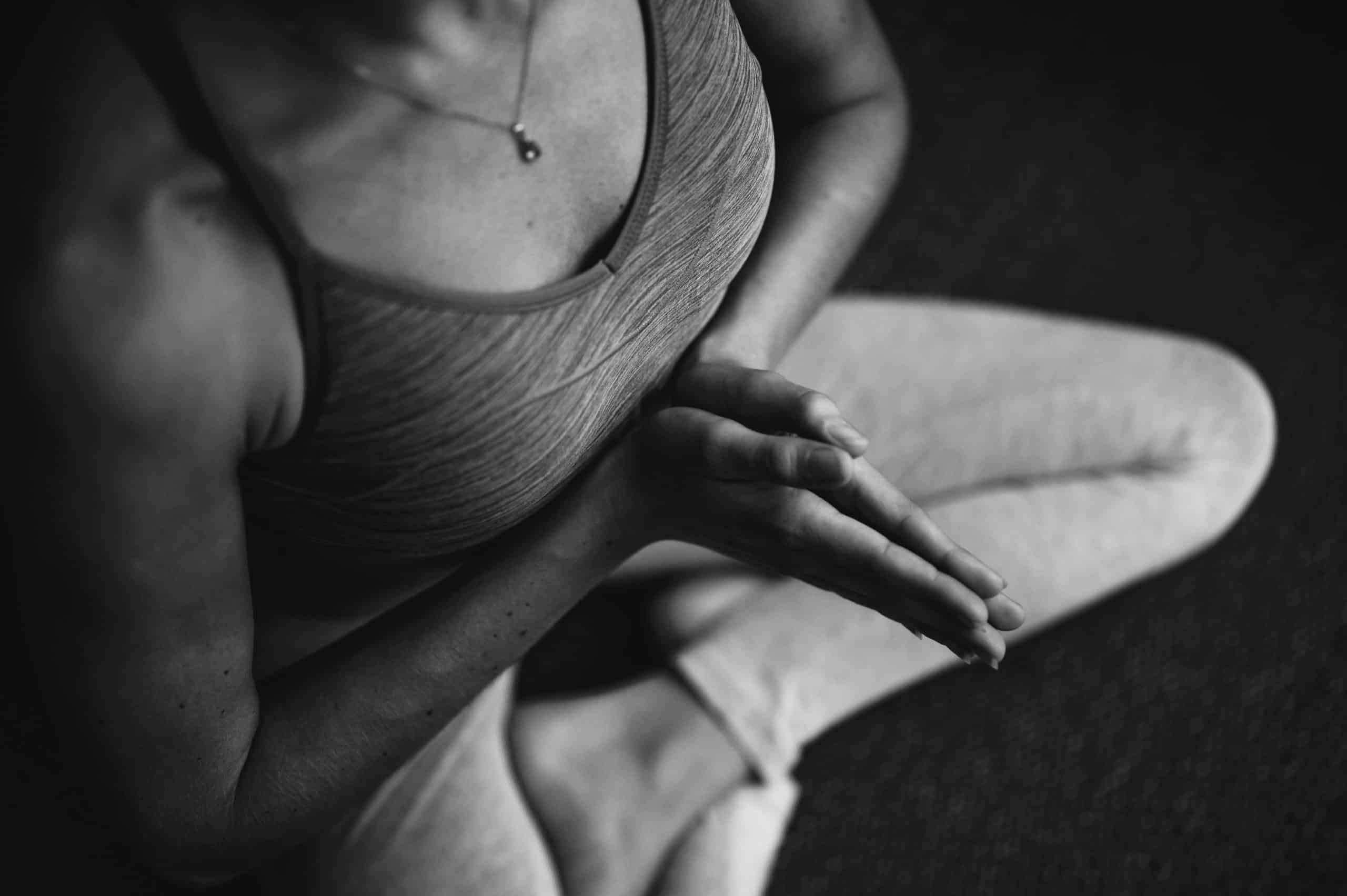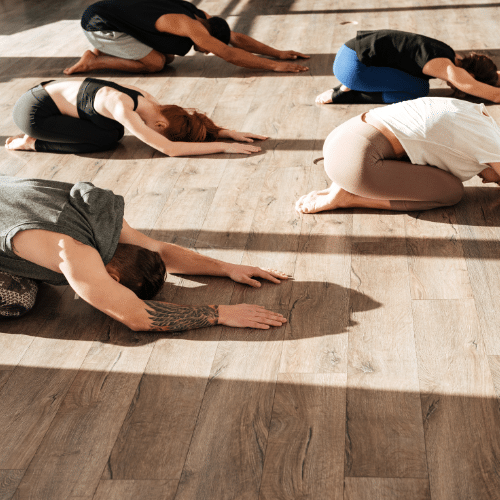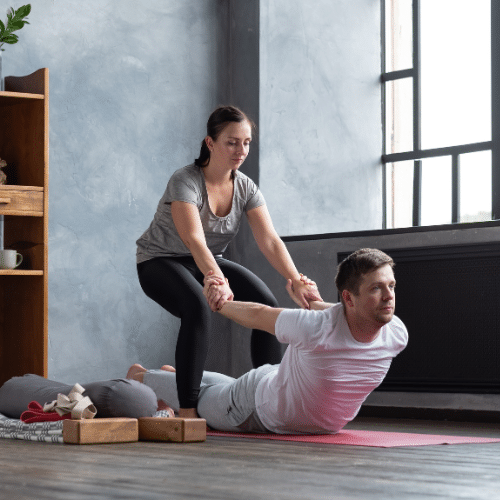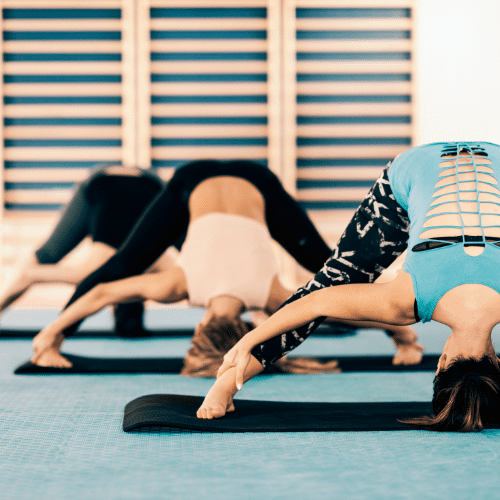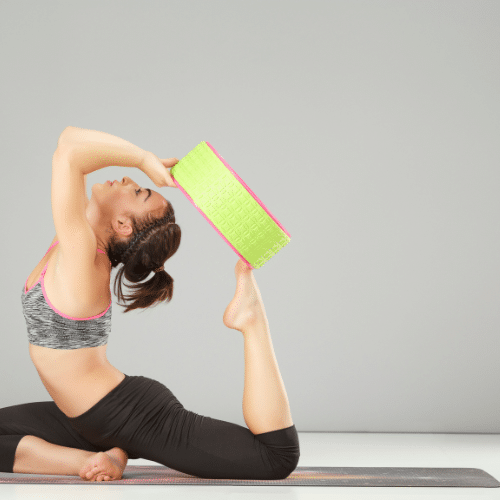Since yoga has been around for many centuries, it’s a given that there are a lot of types to choose from. Unfortunately, the variety of yoga types can be confusing for beginners. There’s a high chance that beginners may choose a type of yoga that’s intended for someone who has experience.
As a beginner in yoga, consider doing Hatha yoga, which combines different ideas, concepts, and principles to attain a healthy body, mind, and spirit. Continue reading to learn more about hatha yoga poses, particularly its origins, benefits, similarities, and difference with vinyasa yoga, as well as a suggested sequence ideal for beginners.
Hatha Yoga: Origins
Hatha, which is roughly translated as “discipline of force,” was introduced to America during the late 1800s when an Indian yogi brought it to Chicago. During the early 1960s, a popular TV program, “Yoga For Health,” introduced this type of yoga to American families. It was in the later ‘60s, with the rise of hippie movements, that Hatha yoga gained nationwide recognition.
As a result, the majority of yoga classes conducted at yoga studios and local gyms revolve around the principles of hatha yoga. In addition to being beginner-friendly, Hatha yoga is also popular due to its physical and mental benefits.
Benefits of Hatha Yoga Poses
By mainly doing its three main practices –– body postures (asanas), breathing techniques (pranayama), and relaxation and meditation (dyana) –– hatha yoga promises to bring the following benefits to its practitioners.
1. Improve Core Strength
As the center of the body, including the hips, abs, and spine, having strong core muscles is vital to accomplish routine activities. This includes getting out of bed, tying one’s shoes, and lifting things. Strong core muscles are especially important for an athlete. Having a weak core will affect one’s endurance. There’s even a tendency that having frail core muscles will affect one’s ability to stretch or bend. As a result, one will be more susceptible to muscle injuries and back pains.
One of the best ways to improve the core muscles is to perform basic Hatha yoga poses, such as Downward Facing Dog, Plank, and Boat. These poses will target the side of the abdomen. Additionally, Warrior I and Chair poses will engage the buttocks. Lastly, Chair and Half Lift poses will strengthen the spine.
Take note that a strong abdomen, buttocks, and spine are all ingredients of a strong core. Thus, engaging these parts of the body will translate into more core strength.
2. May Improve Symptoms of Depression
Some experts believe that Hatha yoga may alleviate depression. This is because, like how antidepressants work, Hatha can act on the brain’s neurotransmitters. To elaborate, yoga is said to increase gamma-aminobutyric acid (GABA) and serotonin, both of which are important neurotransmitters that affect one’s mood.
For instance, GABA will help calm the nervous system. As a result, it’ll remove any anxious feelings caused by depression. On the other hand, serotonin is a popular neurotransmitter that regulates emotions.
3. Promote Good Quality Sleep
In addition to affecting the brain’s neurotransmitters, Hatha yoga may also reduce cortisol levels. Cortisol is an important hormone for one’s sleep cycle. Low cortisol levels will signal the body that it’s time to rest. So, practitioners of Hatha yoga will fall asleep quickly, especially if it’s performed before going to bed.
Moreover, yoga, in general, also promotes better sleep since it emphasizes the importance of meditation and mindful breathing. Both practices are important to keep one’s mind and body relaxed, encouraging good quality sleep.
4. Encourage a Healthy Body Weight
According to Harvard Health Publishing, 30 minutes of Hatha yoga burns more calories compared to water aerobics and weight lifting in general. Practicing Hatha yoga for 30 minutes will burn around 120-178 calories, depending on the weight. It’s no wonder why the majority of yogis’ reason why they started doing yoga is weight loss.
If you’re doing yoga for weight loss, it’s important to keep in mind that yoga alone won’t shed off unwanted weight instantly. Instead, when doing Hatha yoga, transition more quickly from posture to posture. Also, don’t forget to be in a calorie deficit. You may also add some activities that’ll help burn off some pounds, like cardio exercises. Most importantly, be consistent with your efforts.
5. Strengthens Immunity System
Lack of sleep, high stress, and poor diet are only a few factors that greatly affect the immune system. A weak immune system means more chance of contracting diseases and infections. Fortunately, Hatha yoga strengthens the immune system as it lowers one’s stress level. Additionally, yoga also maintains inflammatory levels, decreasing the chances of any immune system disorders.
Headstand, Wide-Legged Forward Fold, Upward-Facing Bow, and Plow Pose are just a few Hatha yoga poses that strengthen one’s immune system.
Hatha Yoga vs Vinyasa
Another popular type of yoga is vinyasa yoga. Vinyasa yoga involves using smooth transitions from one pose to another. Both Hatha Yoga and Vinyasa yoga are the same as both practices use plenty of the same poses.
Differences
Even if both types of yoga use the majority of the same poses, both are different for the following reasons:
- Vinyasa is more fast-paced and demands more breathing control
- Since the poses of Hatha yoga are performed more slowly, which means poses are held longer, it invites more stretching.
To summarize, Vinyasa yoga can be classified as a cardio workout, while Hatha yoga is best for improving one’s flexibility.
Which is Right for You?
Choosing between Hatha yoga and Vinyasa yoga will depend on many factors. Ideally, one should opt for Hatha yoga if they’re new to yoga, not physically fit, want to focus on posture and improve core strength, want to eliminate stress, and prefer a relaxed and slower pace.
On the other hand, Vinyasa yoga is perfect for those who are already familiar with various yoga poses, physically fit, and looking for cardio and strength workouts.
Hatha Yoga Sequence for Beginners
Here’s a Hatha yoga sequence intended or beginners, especially seniors and adults who aren’t physically active.
- Mountain Pose: Begging by standing with arms on the side. Keep your breathing slow. Maintain the pose for two minutes.
- Tree Pose: After two minutes of performing the Mountain Pose, place your left foot on the inner edge of your opposite thigh. Hands should be in a Namaste position. Hold the pose for about a minute. Repeat with the right foot on the opposite thigh.
- Standing Forward Bend: Once the tree pose is complete, bend your upper body at the hips, and rest your hands on the back of both your ankles. Maintain the position for 20 seconds.
- Downward Facing Dog: Exhale as you transition into Downward Facing Dog. Make sure the head is aligned with the arms. Maintain the pose for 30 seconds.
- Bridge Pose: The bridge pose aims to focus on one’s breathing; breath out when lifting the posterior and lower back off the mat. This pose should be maintained for around one minute.
- Savasana: Lastly, move into the corpse pose (savasana) to relax. You can relax and center yourself for 5 to 10 minutes.
Takeaway
Now that you know the benefits of Hatha yoga and why it’s the best type of yoga for beginners, the next thing you should do is find a yoga studio. When doing so, make sure that the yoga studio and its instructors are certified. Zuda Yoga offers a lot of beginner-friendly classes, so make sure to check us out.


